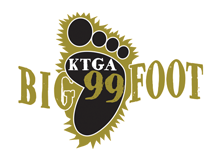Photo – Platte Bridge Station drawn by Bugler Corporal Moellman of Company G, 11th Ohio in 1863 (image found on Wikipedia and is noted with National Archives)
On November 21, 1865, Platte Bridge Station is renamed Fort Caspar in honor of the young captain who had lost his life a few months earlier while defending the crossing on the North Platte River west of present-day Casper.
In response to the 1864 Sand Creek Massacre of Black Kettle’s Cheyenne by Colonel Chivington’s militia in Colorado Territory, Plains tribes increased raids along the trails the following spring.
In July 1865, Lakota, Cheyenne, and Arapaho gathered to attack Platte Bridge Station. On July 26, Lieutenant Caspar Collins led a small detachment from Platte Bridge Station to escort an army supply train that was traveling from Sweetwater Station. Less than a mile from the bridge, Collins’ men were ambushed and had to fight their way back to the fort. Five soldiers, including Collins, were killed in the Battle of Platte Bridge.
Later that day, Sergeant Amos Custard and 24 men with the supply wagons were attacked five miles west of the fort. Only three soldiers survived the Battle of Red Buttes.
Three months after the attacks, on October 26, new troops from Company A, C, F, and G of the 6th West Virginia Volunteer Cavalry arrived at Platte Bridge Station. In all, nine officers and 82 men of the 6th West Virginia, two officers, 149 men of the 11th Ohio, and three officers plus eleven men of the 6th Infantry were assigned to defend the important river crossing. The new troop levels meant that a new fort was needed. Troops began to build in the fall of 1865.
Over the next two years, the army built more than 20 new buildings to house 400-500 soldiers. By Special Order 49, dated November 21, 1865, Major General John Pope changed the name of Platte Bridge Station to Fort Casper, misspelling the fallen lieutenant’s name. Pope chose the lieutenant’s first name because there already was a Fort Collins in Colorado named for his father.

Photo – Ernest Hemingway and Martha Gellhorn – Courtesy Literary Hub
Also on this date, November 21, 1940, celebrity writer Ernest Hemingway marries his third wife, Martha Gellhorn, in Cheyenne at the Union Pacific Depot dining room.
The romance began one evening, close to Christmas 1936 in Key West at Sloppy Joes, a bar. Gellhorn was a young journalist. She was visiting her mother, Edna, and younger brother, Alfred, taking a break in the winter sun. Martha noticed “a large, dirty man, in untidy and somewhat soiled white shorts and shirt,” sitting in a corner, drinking and reading his mail. And so it began…
A long romance with many hurdles. Their romance blossomed in war torn Madrid. Back stateside, their affair would stretch from Wyoming and Idaho in the fall. Then from Wyoming to Cuba with long nights of drinking at Flordita, Hemingway’s favorite bar. Then they finally married on November 21 in Cheyenne. They would be divorced four years later.
Not that it matters, but while married to Hemingway, Gellhorn had an affair with US paratrooper Major General James M. Gavin, commanding general of the 82nd Airborne Division. Gavin was the youngest divisional commander in the US Army during World War II.
Gellhorn wrote of her famous affairs in 1972, saying, “I was the worst bed parner in five continents.”













